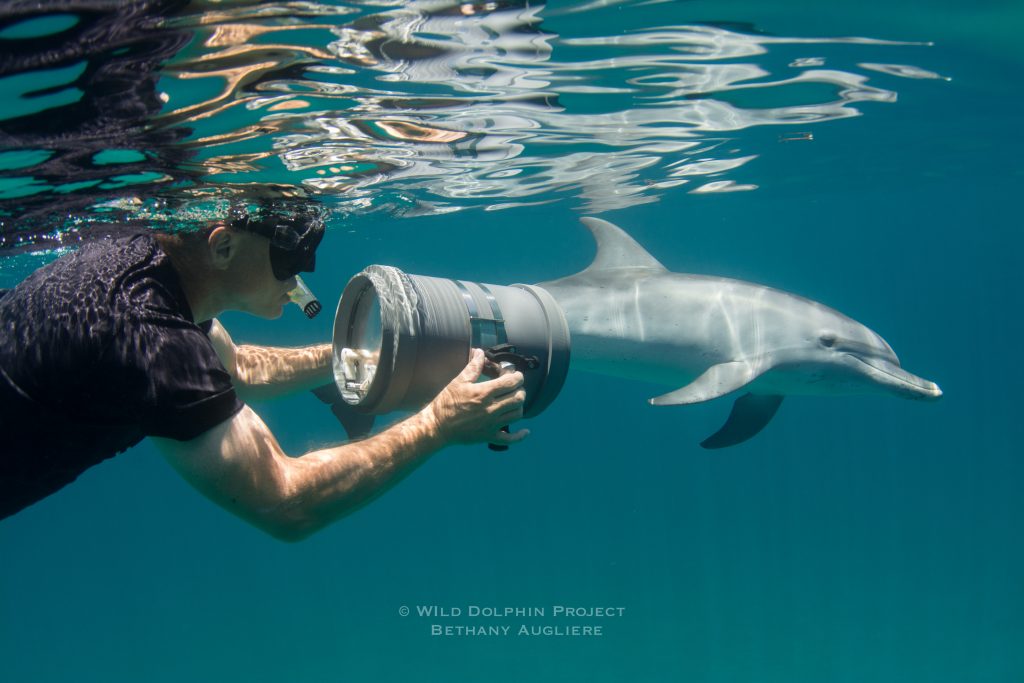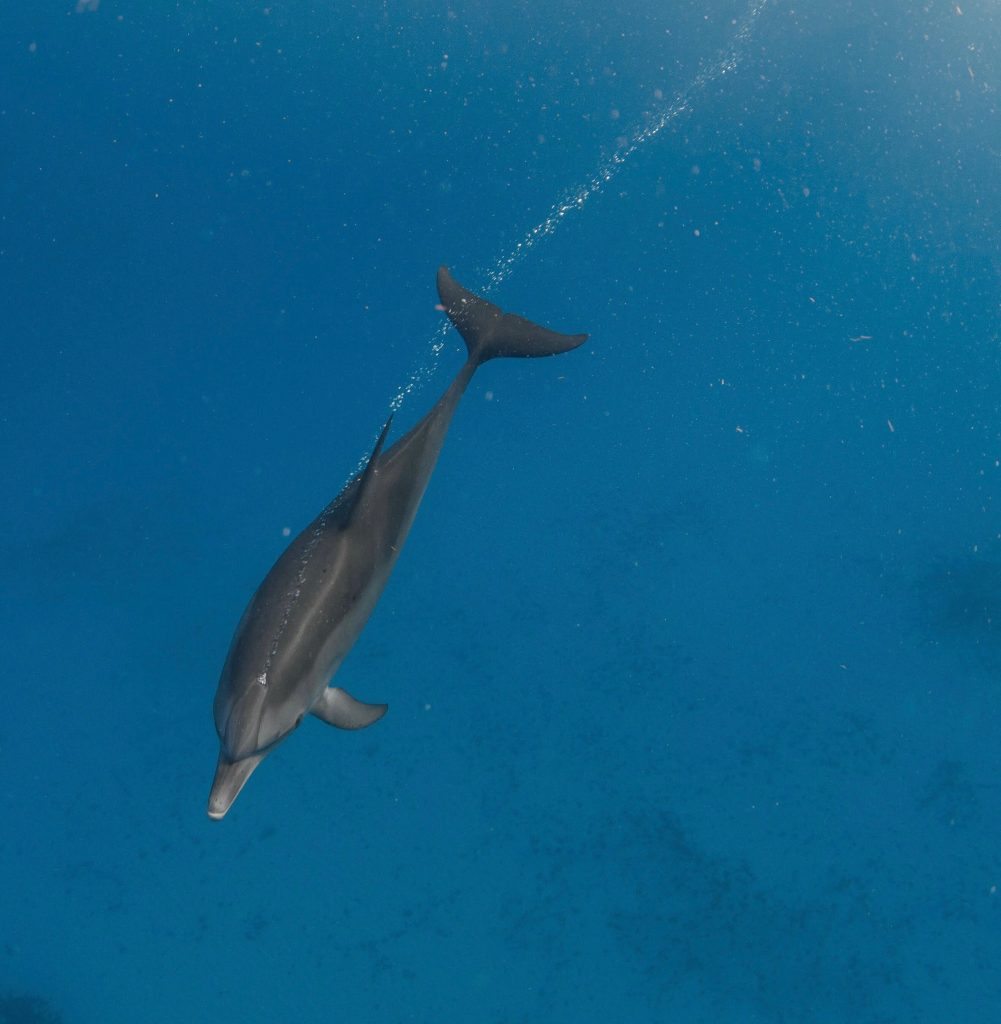
Atlantic spotted dolphin with bubbles. Photo by Nicodemo Ientile.
We know animals communicate, but do they have language?
Dr. Denise Herzing, research director of Wild Dolphin Project, founded the scientific nonprofit in 1985 to learn more about the communication and behavior of wild dolphins. She’s an expert at understanding their sounds. Denise has given countless presentations on the subject, including a TED Talk, as well as publishing scientific papers. “So decades ago, not years ago, I set out to find a place in the world where I could observe dolphins underwater to try to crack the code of their communication system,” she said. Her work could potentially answer if dolphins have language, or elements of language.
It’s hard to study animals underwater. In most places, the water is murky and the animals are skittish. But, in the Bahamas, she found a community of dolphins that live in these beautiful, clear, shallow sandbanks. They spend their daytime resting and socializing in the safety of the shallows, and at night, they go off the edge and hunt in deep water.
While dolphins communicate in many ways, using their body posture to convey a signal, or touch, they are natural acousticians. And underwater, sound is most important. Dolphins make sounds 10 times as high and hear sounds 10 times as high as we do. They make sounds by releasing air through the blowholes — not their mouths. Dolphins lack vocal cords in their larynx. So, what types of sounds do these agile marine mammals make and how do researchers study them?
Understanding Sounds: Types
Signature Whistle
The most famous of their communication sounds is the signature whistle, which is specific to an individual dolphin — like a name. It’s the best studied sound because it is easy to measure, Denise says. And it is used to broadcast the identify of the sender. You’ll hear it when dolphins, such as a mother and calf, reunite with each other. Sometimes they direct it at us, the researchers, when they see us underwater, excitedly circling around and whistling their name. It is also observed during courtship, mating and to facilitate group cohesion.
Bubbles are often expelled from the blowhole during this type of vocalization.
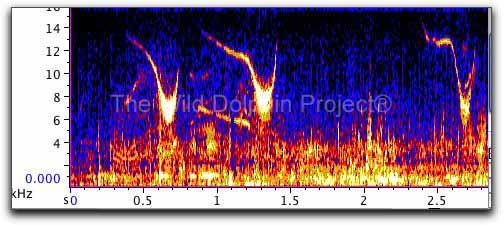
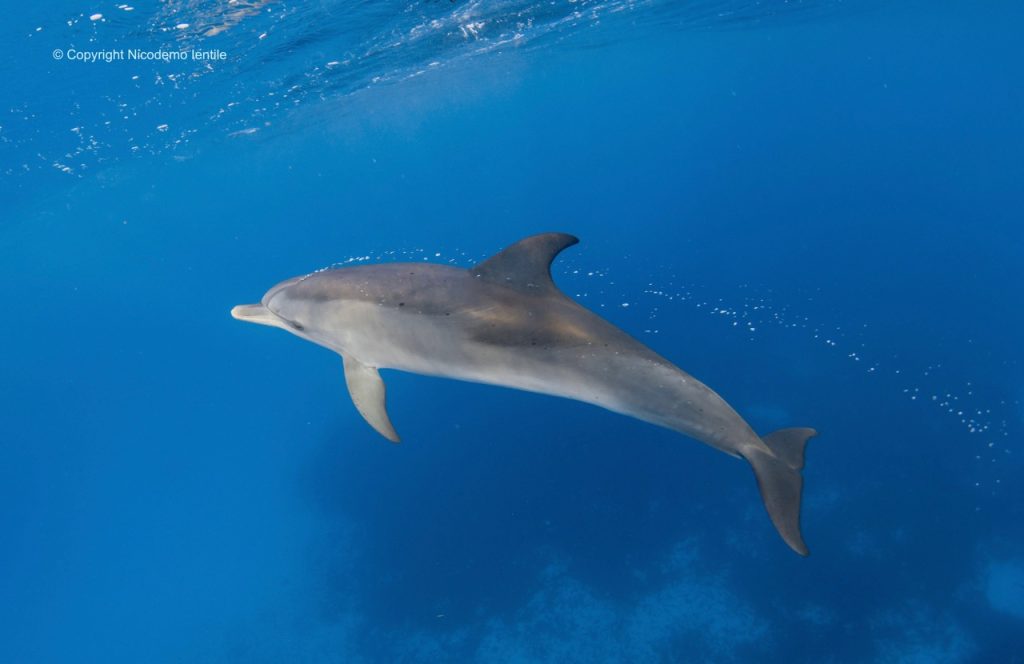
Photo by Nicodemo Ientile.
To study whistles, researchers historically report qualitative/descriptive comparative visual assessments of frequency contours made by a human. However, quantitative methods an neural networks have been used. It’s just a challenge to get a large enough sample size.
Burst-Pulsed
Another type of sound is the burst-pulse sound. These are packets of clicks spaced tightly together. This is used when dolphins are fighting or resolving conflict. They are less studied because they are harder to measure. They can take on many different variations, labeled as a bark, squawk, scream, or trill. Interestingly, it was discovered in recent years that groups of dolphins can also synchronize these sounds.
In the Bahamas, males will synchronize vocalizations during aggressive encounters
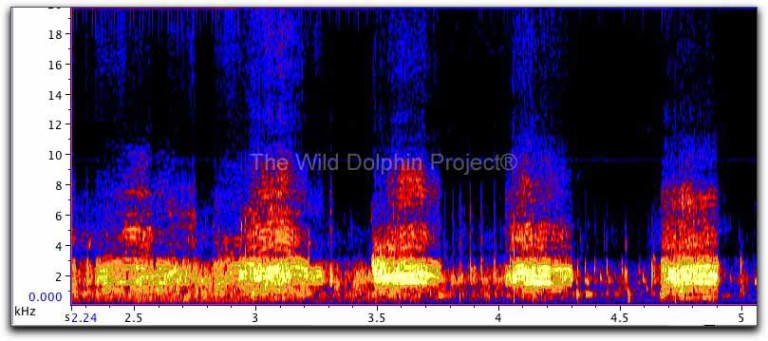
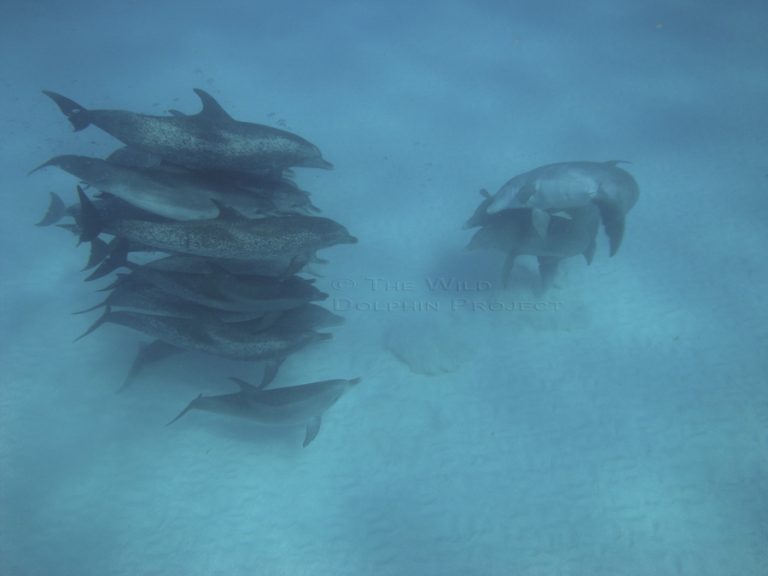
Males synchronized during aggressive encounter. Copyright WDP.
Echolocation
Echolocation clicks are a broadband, up to 130kHz, clicks used for echolocation, which aid in navigation, orientation and location of prey. Clicks usually contain ultrasonic information above human hearing.
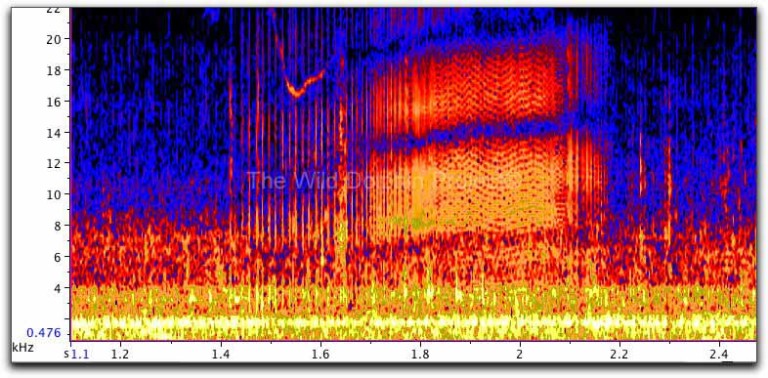
CHAT: Cetacean Hearing and Telemetry
Two initiatives are currently underway with a team at Georgia Institute of Technology. The first is to apply a variety of machine learning algorithms to discover patterns in the dolphins sounds. The second is to utilize and underwater computer interface to explore two-way communication between the dolphins and researchers.
CHAT is an underwater computer designed by Dr. Thad Starner and his team at Georgia Tech. CHAT receives sounds via two hydrophones (underwater microphones), and produces sounds through an underwater speaker. The benefit of CHAT is that if the dolphins can learn the artificial whistles Denise and her colleagues have created, they could request things from the scientists.
“What it would be like to really understand the mind of another intelligent species on the planet?” Denise asks, as she concludes her TED talk.
FURTHER READING
If you are interested in reading and learning more about the scientific method to study dolphin acoustics, be sure to read our scientific publications.
More about CHAT.
Learn about our communication work with ASPOD, in collaboration with Dr. Matthias Hoffmann Kuhnt.
